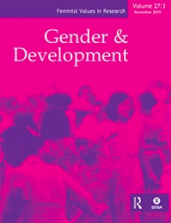Women’s Search for Public Space and Leisure in Agra: Cots, courtyards, and riverbank

Overview
Historians have often highlighted the centrality of bazaars and the streets in urban public life in India as a space for politics and mobilisation. Historically, these bazaars and streets have been the domain of men, while spaces created by dominant urban planning logics like sequestered parks and enclosed marketplaces are marked by exclusion across various axes. Where do women then find opportunities for leisure, solidarity, chance encounter, or discursive politics? The paper explores this question through a case study of a low-income riverside settlement in Agra using ethnographic field work conducted in 2019. This included observations, interviews, and group discussions with residents, community leaders, and police officials, and a systematic review of local and national news reports. The paper finds that for women, public spaces like riverbanks, streets, and large parks are characterised by a ‘mahaul’ (translated here as affective environment) that is risky and ‘kharab’ (immoral or corrupt) due to their sticky affective association with harassment, transgression, romance, and the risk of elopements. Instead, women find opportunities for leisure and sociality by coming together on cots in shared courtyards or rooftops within their neighbourhood – these form their ‘enclosed outside’ where they find opportunities for sociality, leisure (which exists simultaneously with work), and discussion. By centring women’s experiences, vocabularies, and everyday relationship with public spaces, and underscoring the register of ‘affect’ in these experiences, this paper makes an important contribution to the growing literature on gendering right to the city and the feminist argument for women’s right to leisure spaces. The paper also centres the importance of local built elements like shared courtyards within a neighbourhood especially for women, with implications for urban planning and design.
Additional details
Author(s)
Publisher(s)
Editor(s)
DOI
https://doi.org/10.1080/13552074.2024.2354632ISBN
1355-2074How to cite this resource
Citation styles vary so we recommend you check what is appropriate for your context. You may choose to cite Oxfam resources as follows:
Author(s)/Editor(s). (Year of publication). Title and sub-title. Place of publication: name of publisher. DOI (where available). URL
Our FAQs page has some examples of this approach.
